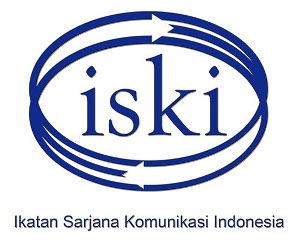ANALISIS SEMIOTIKA TERHADAP IKLAN SPRITE EDISI MITOS VS KENYATAAN DI TELEVISI
Abstract
This research analyzes the Myth Vs Reality edition of Sprite advertisement. The company wants to offer the freshness of the product with the advertisement. This research applies the semiotic perspective from Roland Barthes to analyze connotation, denotation, myth and ideology to find the message behind the advertisement. This research uses qualitative approach and semiotic analysis method. The primary data is Myth Vs Reality edition of Sprite advertisement record. The secondary data is literary review and other information. This researcher analyzes the advertisement with the semiotic model from Roland Barthes. This researcher analyzes all communication icons and cinematographic aspects in the advertisement. Finally, researcher concludes that the advertisement urges people to think logically. It urges people to understand that a drink cannot make them suddenly rich or get the ideal lover without doing nothings. However, a drink makes the body fresh and Sprite is a lime-flavored soda that can make the body fresh.
Keywords: Advertisement, Semiotics, Roland Barthes
Full Text:
PDFReferences
Barker, Chris. 2005. Cultural Studies: Teori dan Praktik. Yogyakarta: PT. Bentang Pustaka.
Barthes, Roland. 2010. Membedah Mitos-Mitos Budaya Massa: Semiotika atau Sosiologi Tanda, simbol, dan representasi. Yogyakarta: Jalasutra.
Bungin, Burhan. 2003. Analisis data Penelitian Kualitatif. Jakarta. PT. Raja Grafindo Persada.
Christony, Tommy. 2004. Semiotika Budaya. Depok: Universitas Indonesia.
Departemen Pendidikan Nasional. 2005. Kamus Besar Bahasa Indonesia. Jakarta: Balai Pustaka.
Danesi, Marcel. 2010. Pesan, Tanda dan Makna: Buku Teks Dasar Mengenai Semiotika dan Teori Komunikasi. Yogyakarta: Jalasutra.
Effendy, Onong Uchjana. 2002. Hubungan Masyarakat Suatu Studi Komunikologis. Bandung: PT. Remaja Rosdakarya.
Hardjana, Agus M. 2003. Komunikasi Intrapersonal dan Interpersonal. Yogyakarta: Kanisius.
Kotler, Philip. 1984. Marketing Management: Analysis, Planning and Control Fifth Edition. New Jersey : Prentice-Hall.
___________. 2002. Manajemen Pemasaran jilid 1. Jakarta : Prenhalindo.
Krisyantono, Rachmat. 2014. Teknik Praktis Riset Komunikasi. Jakarta: Kencana.
Kuswandi, Wawan. 2000. Komunikasi massa: Sebuah Analisis Media Televisi. Jakarta: PT Rineka Cipta.
Lexy M.A, Moleong J. 2007. Metode Penelitian Kualitatif. Bandung: PT. Remaja Rosdakarta.
Littlejohn, Stephen W. & Karen A. Foss. 2009. Teori Komunikasi: Theories of Human Communication Edisi Kesembilan. Jakarta: Salemba Humanika
Morissan. 2014. Komunikasi Pemasaran Terpadu. Jakarta : Kencana.
Pradopo, Rachmat Joko. 1991. Panduan Membaca Teori Sastra Masa Kini. Yogyakarta: Gagjah Mada University Press.
Rangkuti, Freddy. 2004. The Power of Brands. Jakarta : PT. Gramedia Pustaka Utama.
Sendjaja, S Djuarsa. 2009. Pengantar Ilmu Komunikasi. Jakarta: Universitas Terbuka.
Sobur, Alex. 2009. Semiotika Komunikasi. Bandung: PT. Remaja Rosdakarya.
Sobur, Alex. 2009. Analisis Teks Media. Bandung: PT. Remaja Rosdakarya.
Sutisna. 2002. Perilaku Konsumen ”Komunikasi Pemasaran”. Bandung : Remaja Rosdakarya.
Tjiptono, Fandy dan Chandra Gregorius. 2012. Pemasaran Strategik. Yogyakarta : Penerbit ANDI.
Wood, Julia T. 2009. Communication in Our Lives. USA:University of North Carolina at Capital Hill
Zoest, Aart van. 1993. Semiotika: Tentang Tanda, Cara Kerjanya dan Apa yang Kita Lakukan Denganya.Jakarta: Yayasan Sumber Agung.
DOI: http://dx.doi.org/10.30813/s:jk.v10i2.952
Refbacks
- There are currently no refbacks.
Copyright (c) 2017 SEMIOTIKA: Jurnal Komunikasi
Publisher
Editorial Board SEMIOTIKA: Jurnal Komunikasi
Department of Communication
Faculty of Social Science and Humanities
"UNIVERSITAS BUNDA MULIA"
Lodan Raya St No.2, North Jakarta 14430
Phone: +62 21 692 9090 ext. 348
Email: SEMIOTIKA@ubm.ac.id













